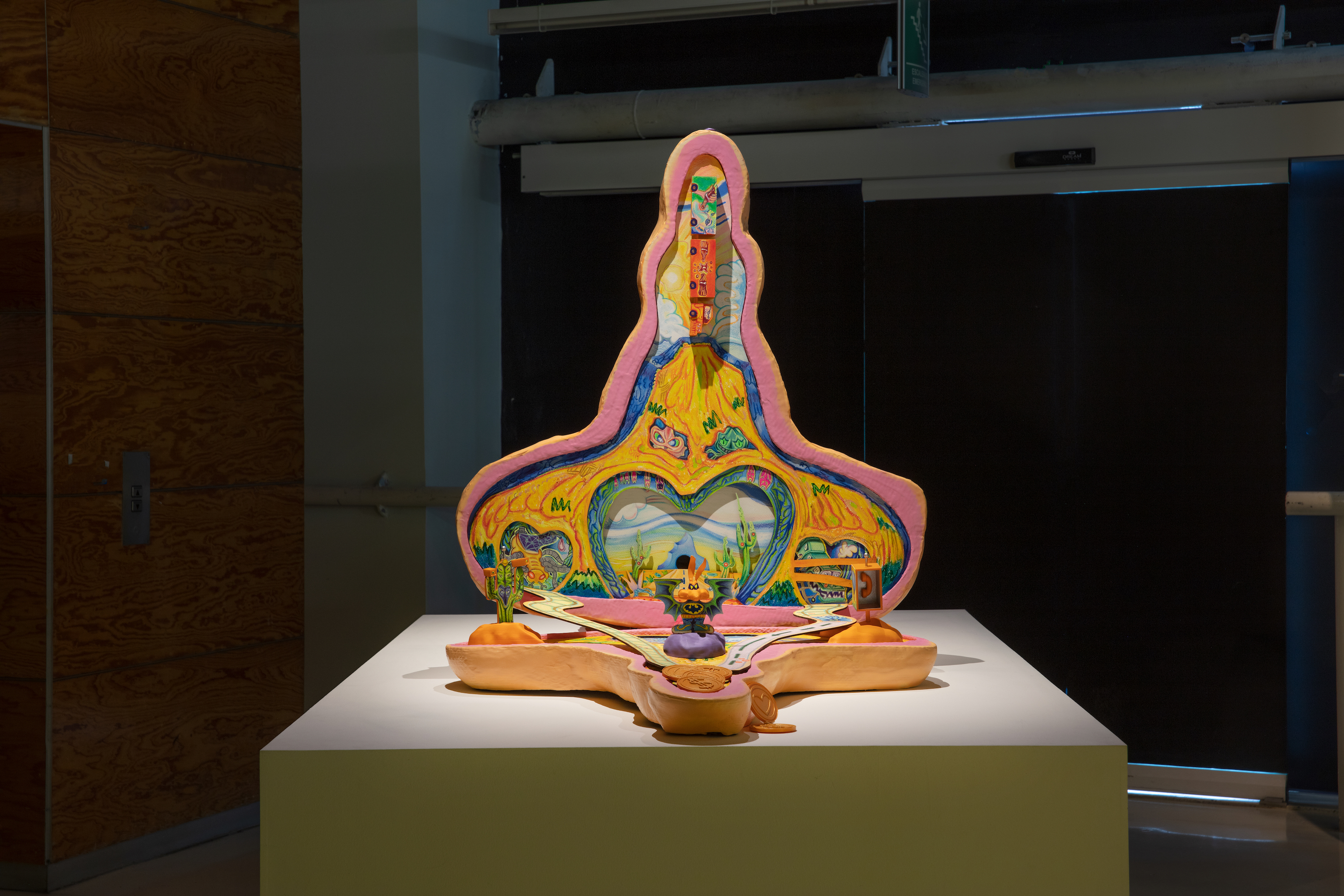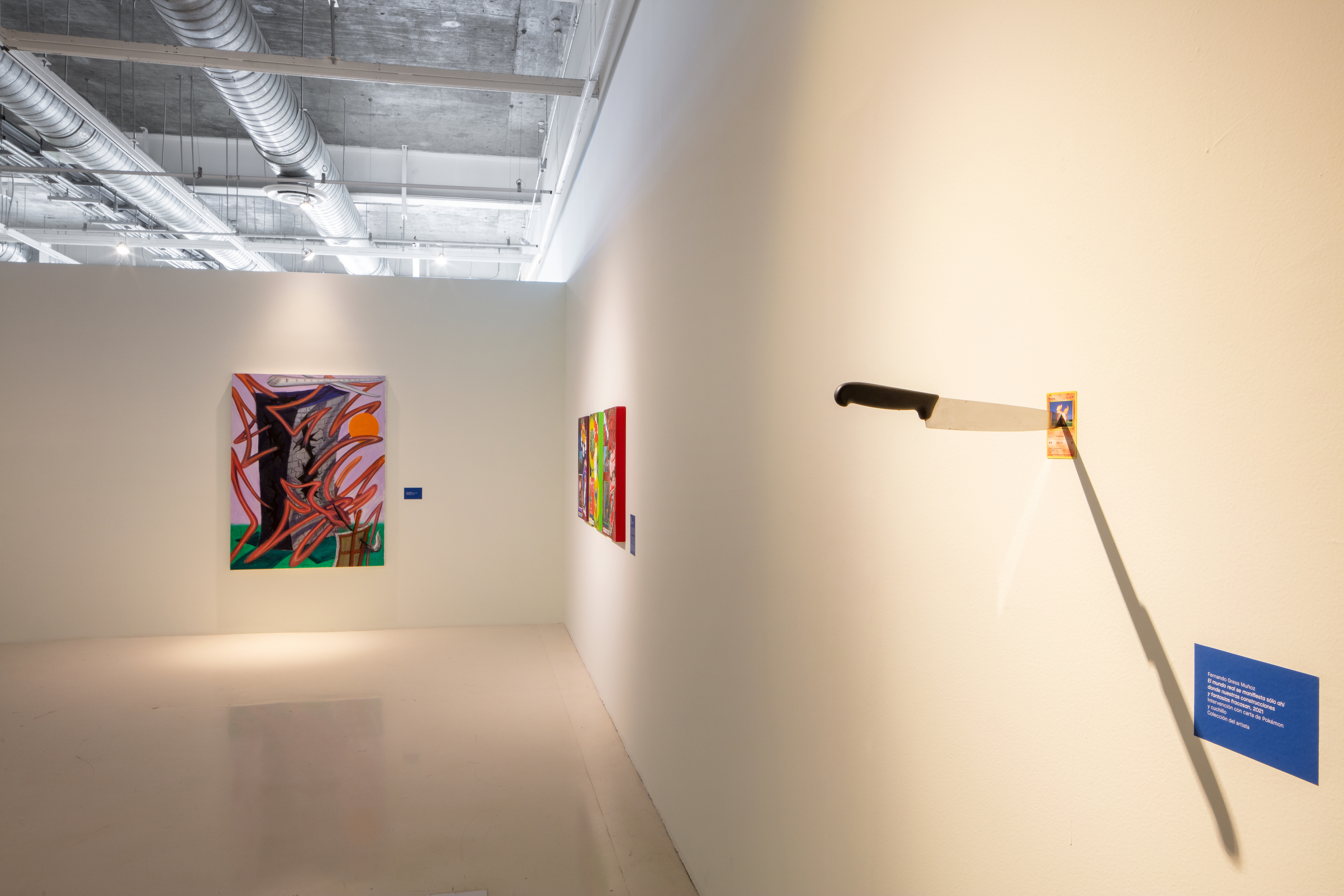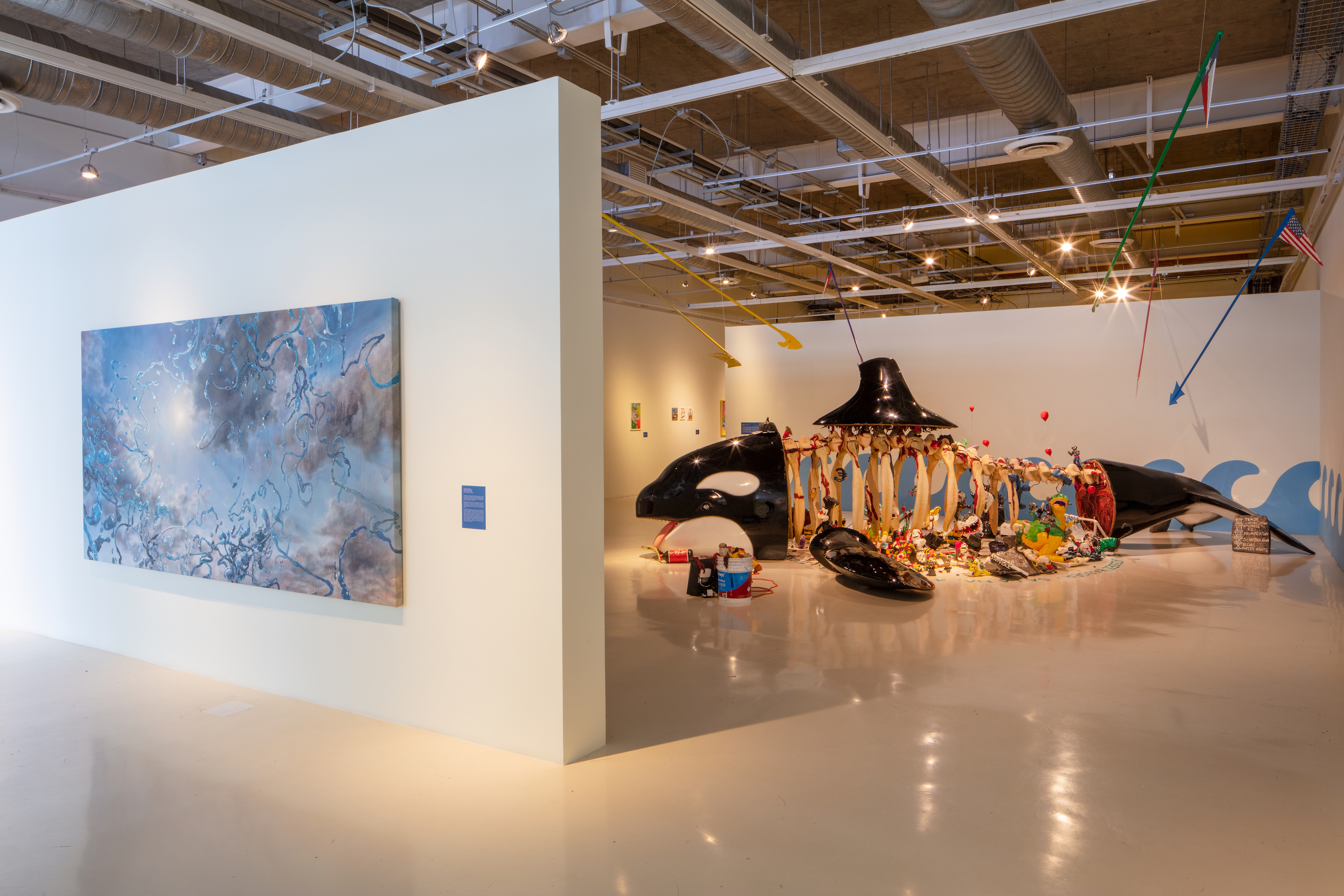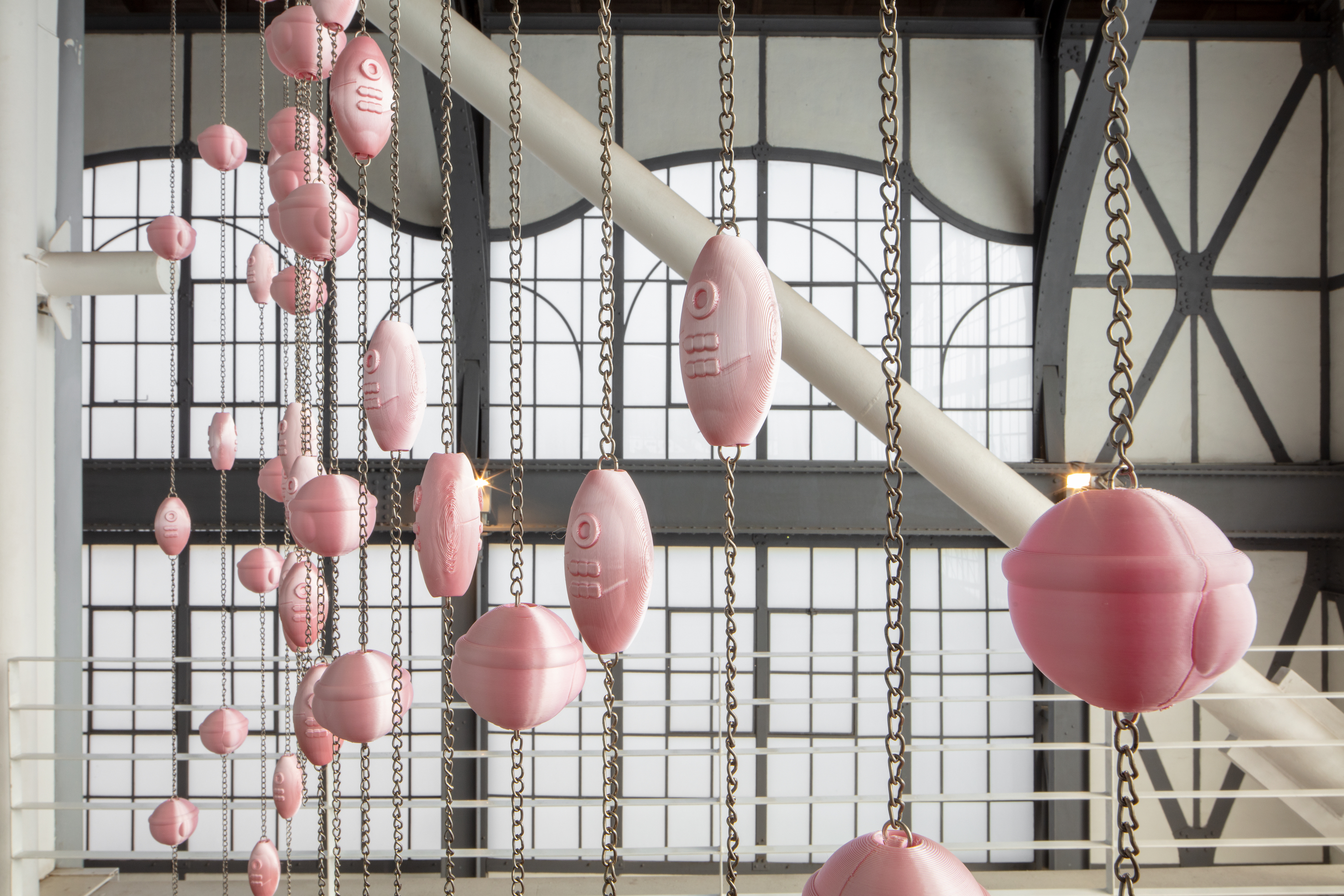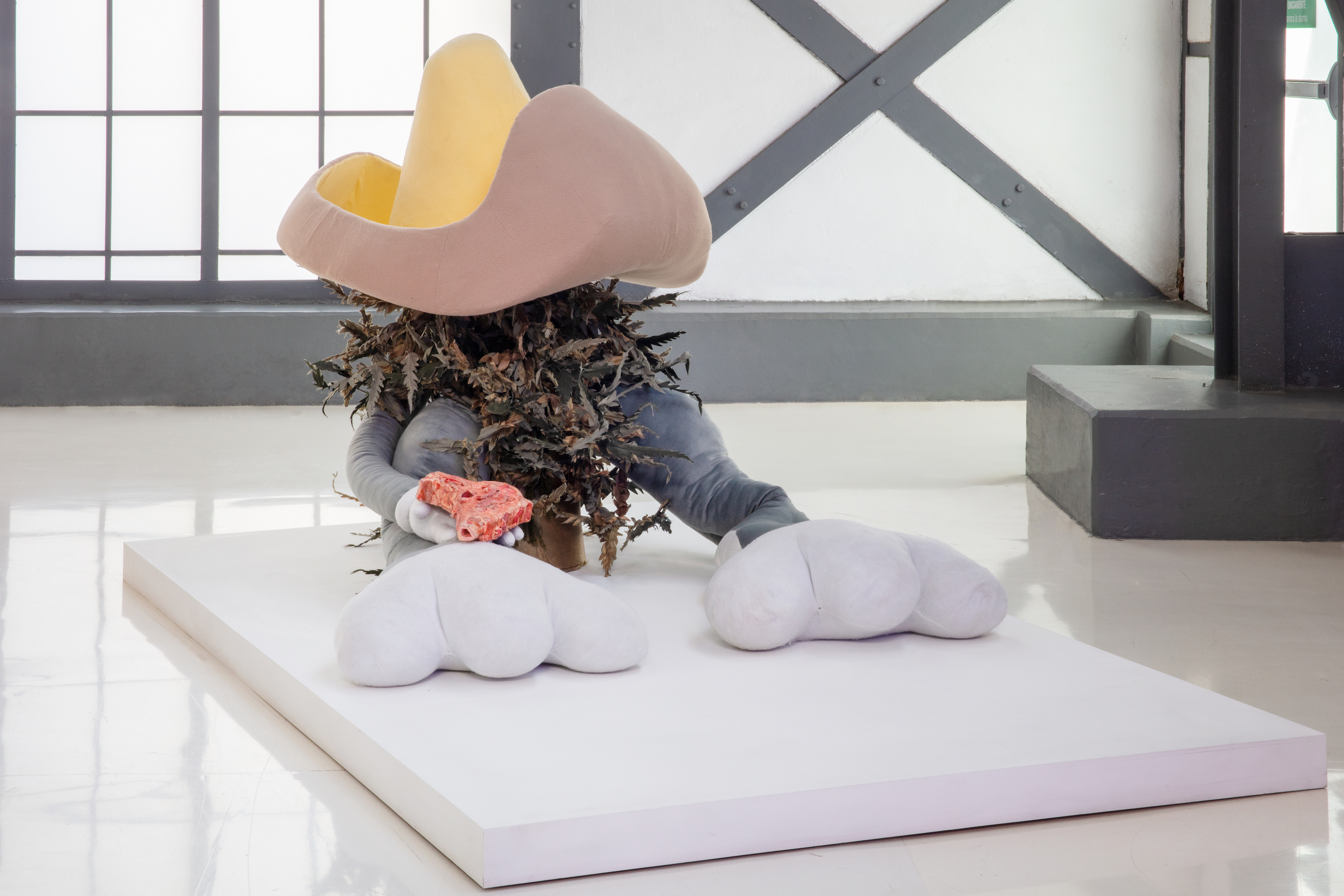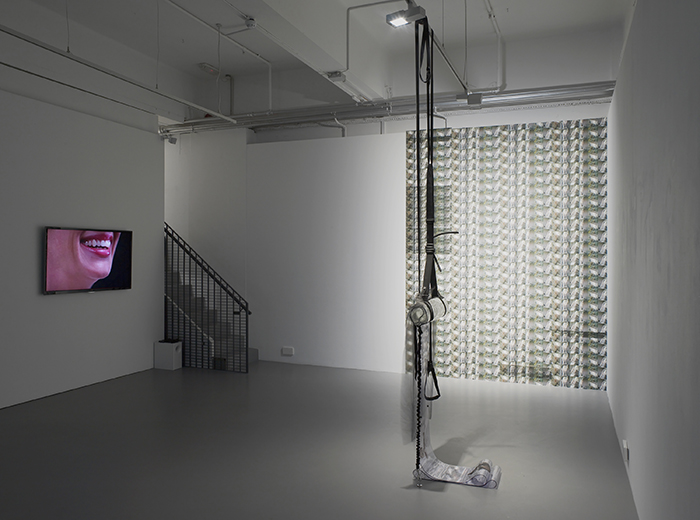November 30, 2023–May 24, 2024
In her curatorial text for this group exhibition of Mexican artists mostly born in the nineties, Karol Woller Reyes defines a “generational imagination.” It belongs to artists who have “naturally incorporated some creative strategies” such as digital montage and circuit bending into the production of paintings and sculptures that also abound with references to pop-cultural figures from Pokémon to Pepe the Frog. The implication is that the art of today is shaped by the technologies and media environment of its makers’ adolescence. Shared access to cable TV and computers during childhood does not, however, a generation make.
One of the narrow aisles that encircles the warehouse-like main gallery at Museo El Chopo housed the first, smaller part of “El Fin de lo Maravilloso.” Tucked to the side of the glass-walled gift shop were pieces by YOPE Projects collective crowded into a scaffold structure resembling an open-air market; a very early José Eduardo Barajas painting of cloudy emoji-like figures (Cirrus, Socrates, particle, decimal, hurricane, dolphin, tulip, Monica, 2018) in a freestanding wooden frame; and ¿Estamos, Kimosabe? (2020) a much-exhibited soft sculpture of a Mexican Bugs Bunny by Paloma Contreras Lomas—which judging by the dirt on its paws, has seen better days. Part two of the show, in a larger upstairs gallery, fared similarly.
None of these artists emerged from this hyper-connected, hyper-consumerist ether on their own, and the show might have paid more attention to a generation from the 2000s—among them Minerva Cuevas or Miguel Calderón—that reveled in humor, politics, and corporate branding. Not least because some of them educated the earlier wave of artists featured in this show (Vicente Razo, José Luis Sánchez Rull, and Eduardo Abaroa all taught at the local art school). That wave, in turn, had an impact on the next through influential DIY projects such as Biquini Wax EPS and Ladrón Galería. This omission feels ahistorical and, without a properly theorized alternative narrative, the generation-defining pretensions of the show depend upon piling together works that share some visual or thematic similarity. The more alike they appear, the closer together they are situated in the space, as if to say to the visitor: See?
This is not to say that there are no good works in the show. Among them is Biquini Wax EPS’s Sa La Na, a Yuum, lasis / Laissez Faire-Laissez Passer (2019), a life-size sculpture of Willy, the Hollywood-famous killer whale locally named Keiko (long story), as a colorful rotting corpse inhabited by millennial pop-cultural references.1 It was created for “City Prince/sses” at the Palais de Tokyo in 2019, and shown again at Kurimanzutto, also in Mexico City, in 2020. The piece is significant, not least because it is closely associated with “naftalgia,” a concept coined by the collective in a much-circulated 2017 text which describes the affective and economic upheaval of the North American Free Trade Agreement (NAFTA) deal, and the consequent late-nineties intrusion of cable TV and the internet into Mexican homes, as an epistemological shift. It’s certainly true that the culturtal products and consumer habits of the United States re-calibrated the psyches and aspirations of millions of Mexicans. But how the younger artists of that era dealt with their newfound exposure to international market pressures continues to have a greater influence on current approaches to media—painting, sculpture—than does apparently routine relationship with the internet.
Another high point of this exhibition is the new commission Panoramic sweat (2023) by José Eduardo Barajas, which shows a clear advancement in technique from the artist’s work downstairs. This large-format, landscape painting depicts a cloudy sky overlaid with ribbons of blue-tinged liquid, or sweat, that swirl across the canvas. Barajas’s work is notable for its fascination with the ways in which light interacts, both chromatically and physically, with vapor and liquid, but also with memory—and this was indeed a memorable piece. Unfortunately, it was undermined by its inclusion among a group of big paintings that simply regurgitated the same themes (cartoon characters fighting, for instance) with the same materiality—naïvely composed spray painting in clashing but repetitive palettes. Barajas’s work also faced a wall of pukey green which cast a sickly pallor on its otherwise balanced complexion. Given the curatorial definition of “cyberpop” as “the human quality that integrates technology and images framed by the current popular imaginary to expand its biological functions,” it’s anyone’s guess how these themes materialized in an exhibition so heavily comprised of paintings and drawings.
This show had a lot of buzz going for it, mainly because of a widely held desire for this tight-knit group of artists, who have dominated the scene for several years now, to be recognized by a museum. That this did not happen in an authoritative and satisfying way may reflect the show’s emphasis on cyberpop, an idea and a style that here emerges as so tangential to the local context as to feel indifferent to it. “Naftalgia” might have served as a more productive starting point for exploring how the political, social, and technological transformations of the late nineties led to an artistic upheaval in the form of bright, young Mexican artists—the 2000s generation—gaining international recognition, and how that engagement changed the city’s artistic landscape.
In 1985, a killer whale was sold to the Reino Aventura (now Six Flags México) amusement park in Mexico City, where he was given the nickname Keiko and became a hugely popular attraction who even appeared in telenovelas. He later became globally popular as a result of his appearance in Free Willy (1993) and his subsequent release from his captivity in Mexico was broadcast live in several countries. The Biquini Wax EPS piece references this period of time with a cornucopia of period pop-cultural references alongside semi-biographical references to the affective and material shock of Mexico’s entry into globalization, via NAFTA, including the Mexican peso crisis of 1994.
